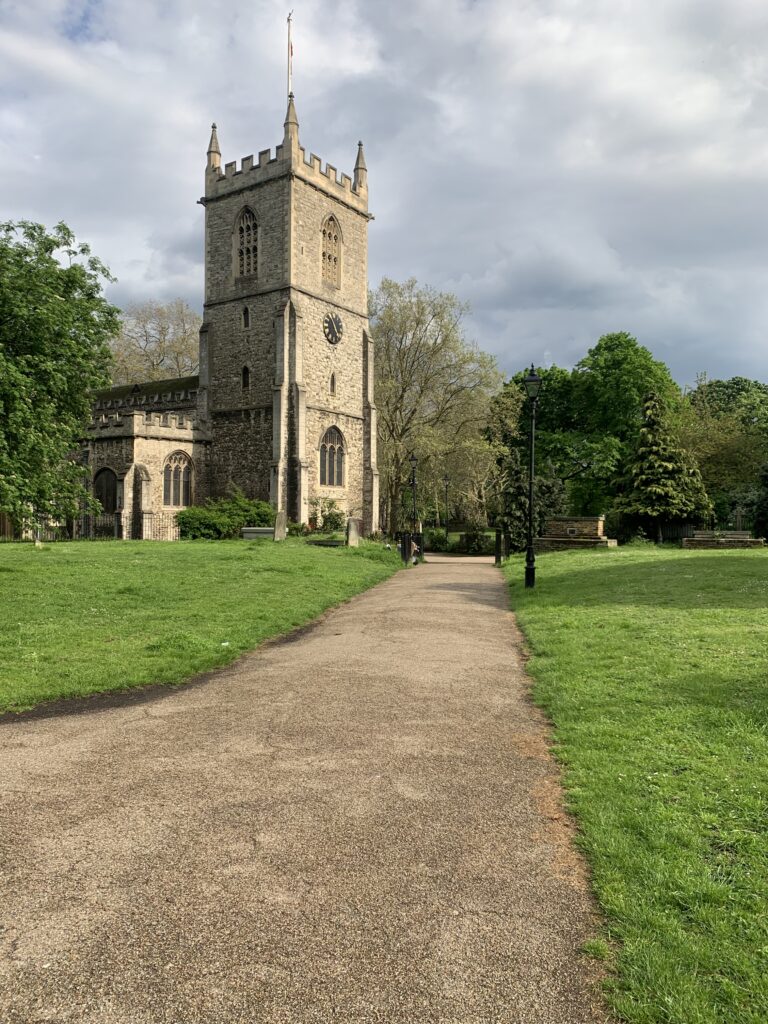
The monthly Curry Club meeting 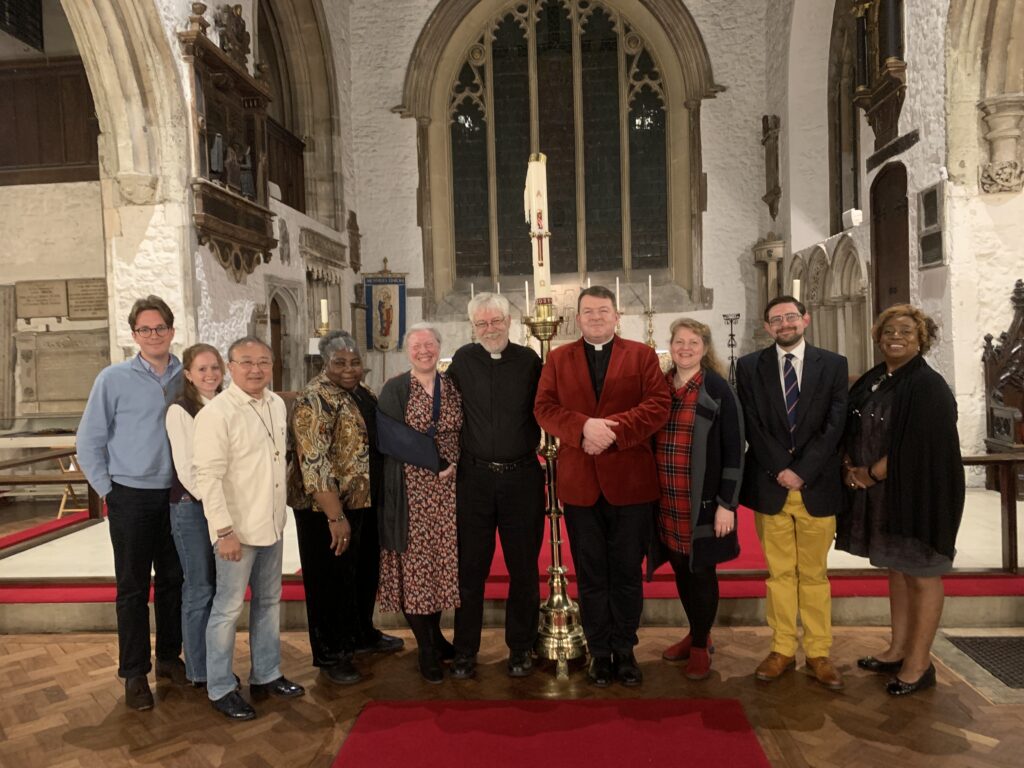
Dinner with the wardens and staff 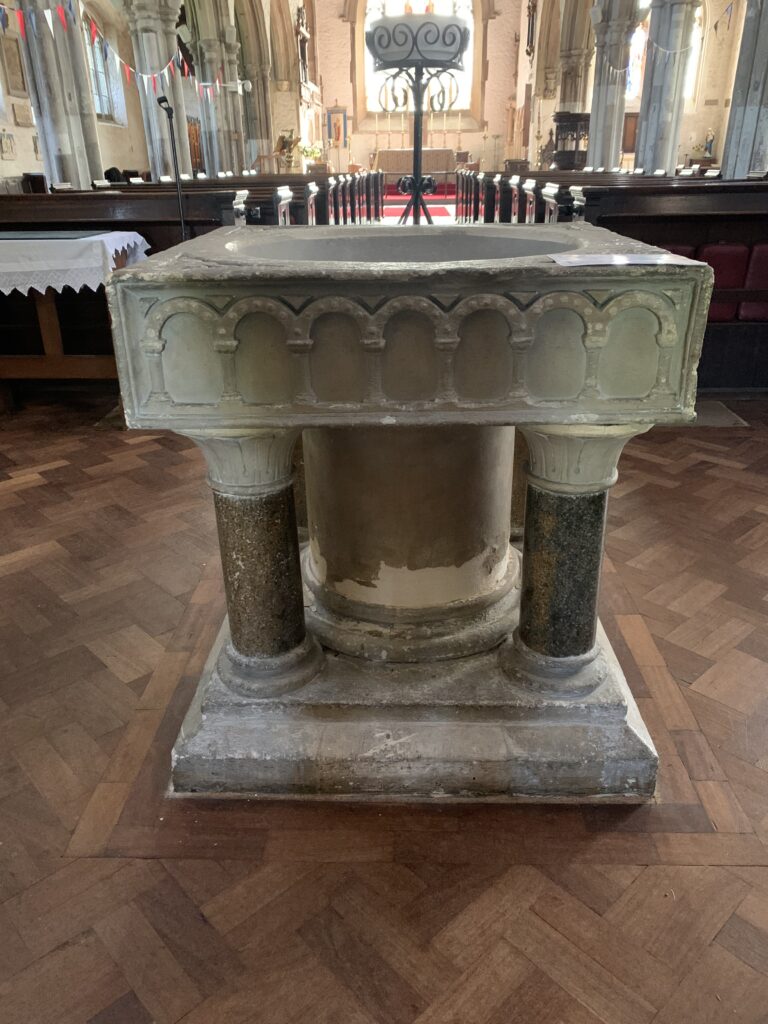
12th century font 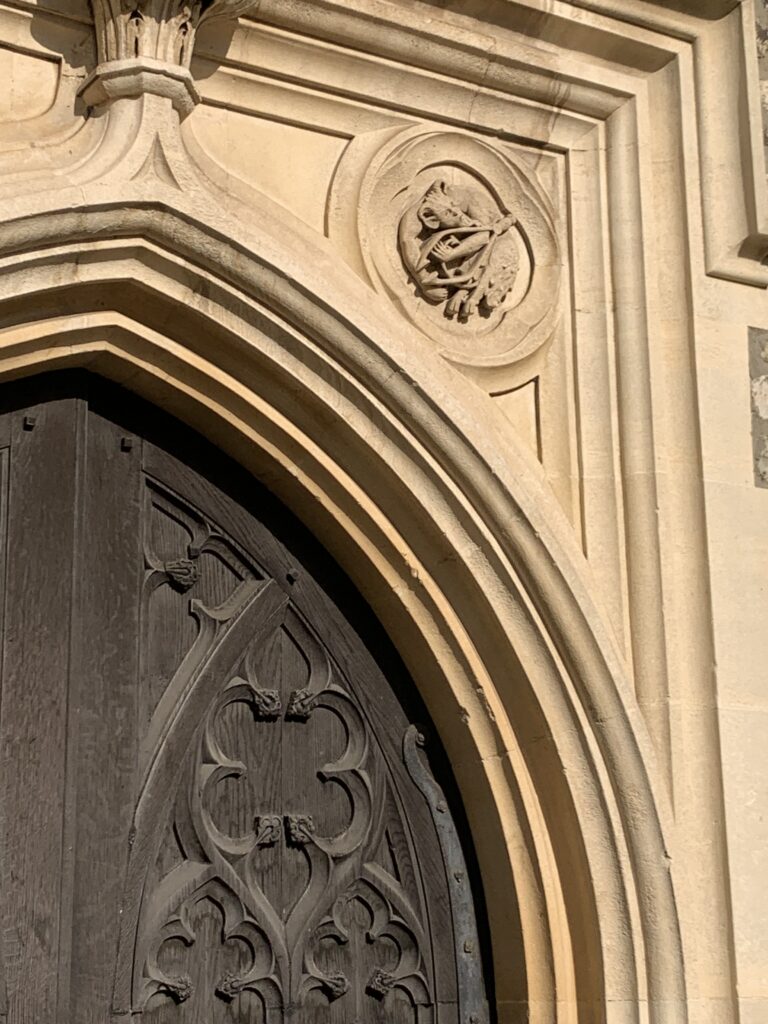
15th century front door of the church 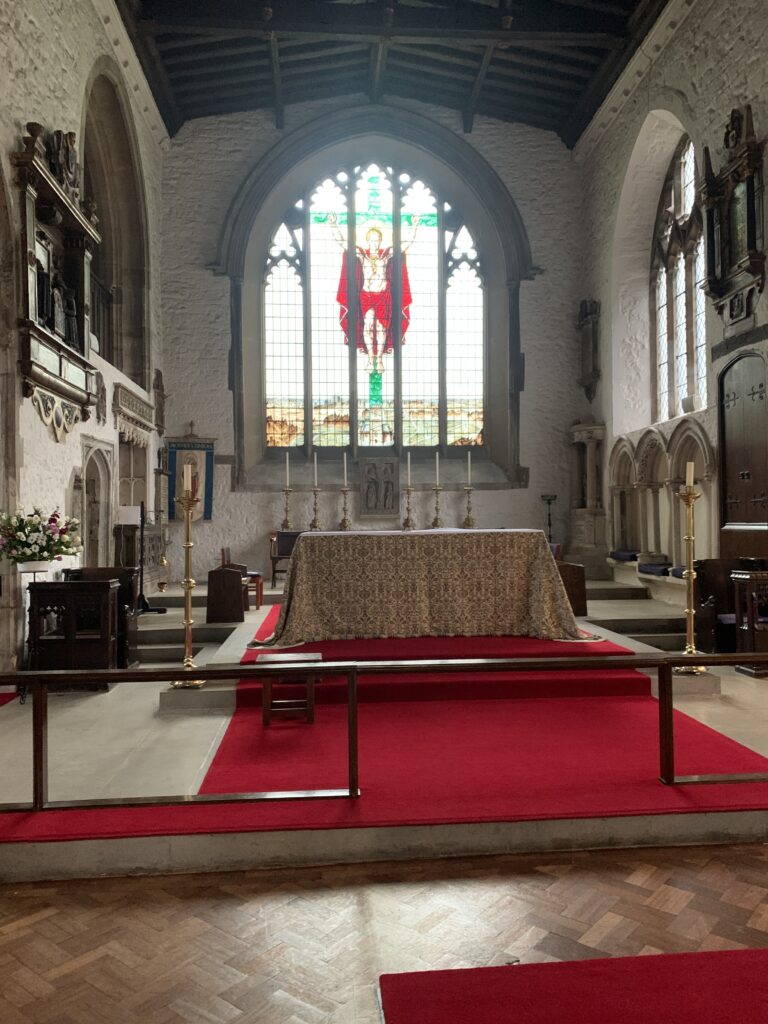
The parish of St. Dunstan’s and All Saints (commonly known simply as “St. Dunstan’s”) in the East End of London was the last church a seagoing ship would pass and the first church a ship would pass returning to port. All births and deaths at sea were recorded there. It is “the parish of the high seas” and many–if not most–people coming to the North American colonies passed by St. Dunstan’s.
It was a wonderful experience to visit our sister parish in London! The parish was dedicated by St. Dunstan in the tenth century; the stone church he built replaced an even older wooden church. The sense of history is palpable—just beneath the surface of everything. Scratch a stone and so much history pours out—most of the altar area of the current church was built in 13th century, though a small portion of it dates from the time of St. Dunstan himself in the 10th century. The current nave was built in the 14th century and the bell tower dates from the 15th century.
St. Dunstan himself was bishop of London and then archbishop of Canterbury. He is said to have been a skilled metal worker and there are several folktales of him besting the devil with pincers, hammers, nails, and horseshoes–all tools found in a metalworking forge. (St. Dunstan’s red-hot pincers, which he used to grab the devil by the nose, appear next to the front door of the church.)
The area around the parish–the East End of London–was heavily bombed during WWII as the Nazis attempted to disrupt British naval operations and capabilities. Although the church building was not damaged, the medieval windows were blown out; the current windows are modern post-war replacements. The window above the high altar shows Christ in glory on the Cross presiding over the resurrection of the East End after the war.
Here’s to many more visits between the Church of the Good Shepherd, Kips Bay (Manhattan) and St. Dunstan’s, Stepney (London)!
See more about St. Dunstan’s, Stepney here and here.
